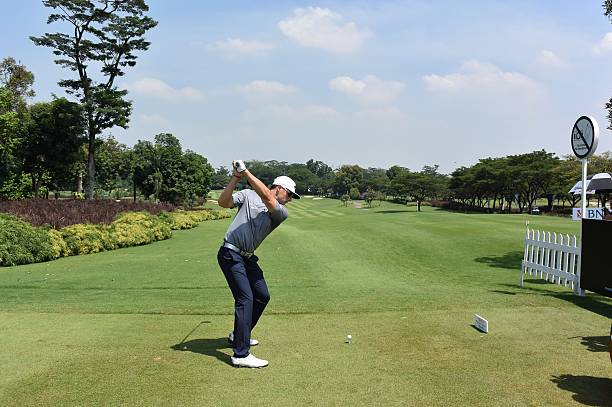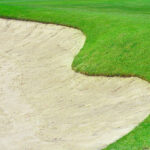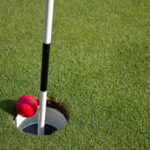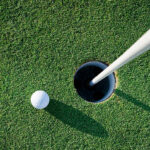Are you one of those golfers who can’t seem to get their ball straight? Have you been struggling with a hook for far longer than it should have taken to fix it? If the answer is yes, then you’ve come to the right place. In this blog post, we’ll help provide some guidance on how to fix golf hook as well as discuss common causes so that you know exactly why this has been happening in the first place. Keep reading and soon enough, seeing progress out on the links will no longer be a struggle.
Contents
- 1 What Is A Hook In Golf And How Does It Affect Your Game?
- 2 Why Fix Golf Hook Matters?
- 3 Identifying The Cause Of Your Golf Hook
- 4 How To Fix Golf Hook?
- 5 The Benefits Of Correcting Your Golf Hook
- 6 Common Mistakes That Cause Hooks And How To Avoid Them
- 7 Tips On How To Intentionally Hook A Golf Ball
- 8 FAQ: Golf Hook
What Is A Hook In Golf And How Does It Affect Your Game?

A hook in golf is when the ball curves to the left (for a right-handed golfer) instead of going straight, resulting in an unwanted slice or pull shot. It can be quite frustrating for golfers and can significantly affect their game. A hook is usually caused by an excessive spin on the ball, which makes it curve towards the left instead of flying straight. This spin can be caused by a variety of factors, such as an improper grip on the club, poor swing mechanics, or incorrect body positioning.
Why Fix Golf Hook Matters?
Fixing a golf hook is important because it can greatly improve your game and help you become a more consistent golfer. A hook can cause your ball to end up in undesirable locations on the course, making it difficult to make par or even bogey. It can also lead to inconsistent shots, which can be frustrating for any golfer. By fixing your hook, you can start hitting the ball straighter and have more control over where it ends up, allowing you to improve your scores and overall enjoyment of the game.
Identifying The Cause Of Your Golf Hook
The first step to fixing your hook is to identify its cause. As mentioned earlier, there are several potential reasons for a golf hook, and each one requires a different approach to fix it. Here are some common causes of a hook in golf:
- Improper Grip: A weak or strong grip on the club can affect how the clubface makes contact with the ball, leading to a hook.
- Poor Swing Mechanics: A swing that is too steep or has an outside-to-inside path can also create excessive spin and cause a hook.
- Incorrect Body Positioning: Your body position at impact can greatly affect the direction of your ball. If your weight is too much on your back foot, it can lead to a hook.
See more : Best Disc For Disc Golf | The Best Discs For Your Game
Similarly, if your hips and shoulders are too open at impact, it can also cause a hook.
How To Fix Golf Hook?
To fix a golf hook, follow these professional tips:
- Adjust your grip to weaken the hold.
- Pay attention to correct ball positioning.
- Ensure proper alignment.
- Check wrist positioning at setup, top of backswing, and impact.
- Transfer your weight correctly and stay behind.
- Make swing path corrections.
- Loosen your grip slightly.
- Dedicate practice time at the range.
The Benefits Of Correcting Your Golf Hook
Correcting your golf hook can have numerous benefits, including:
- Improved Accuracy: Eliminating or reducing your golf hook can greatly improve the accuracy of your shots.
- Consistency: By fixing your hook, you will have a more consistent ball flight and be able to hit straighter shots more consistently.
- More Control Over Your Shots: With a better understanding of how to fix your golf hook, you will have more control over where your shots end up on the course.
- Confidence: Fixing your golf hook can boost your confidence and make you feel more in control of your game, leading to better overall performance.
Common Mistakes That Cause Hooks And How To Avoid Them
- A Grip That is Too Strong: When golfers slice the ball, the first thing that a coach will often tell them to do is strengthen their grip. However, if your grip is too strong, your left hand (for a right-handed player) will be twisted too far to the left. To avoid this, ensure that your grip is neutral, with both hands in a comfortable position on the club.
- Setup Lines are Crossed: Amateur golfers are often completely unaware of how their setup position impacts their golf swing. It’s important to align your feet, clubface, hips, and shoulders properly to avoid creating a hook before even taking the club back. Using alignment sticks during setup can help ensure that you are ready to hit the golf ball soundly.
- Shallow Swing Path: While a shallow swing path itself is not always the cause of a hook, when combined with a closed clubface, it can significantly worsen the hook. Aim for a more neutral swing path with a square clubface to improve your chances of hitting the ball straight.
- Poor Wrist Action: The wrist action in your golf swing can also be a major culprit when it comes to hooking the ball. If your wrist causes the clubface to close before impact, you may not have enough time to recover. To address this, consider using tools like HackMotion to diagnose and improve your wrist action during practice.
By being aware of these common mistakes and making the necessary adjustments, you can avoid hooks and improve your overall golf game.
Tips On How To Intentionally Hook A Golf Ball

See more : How Long Does It Take To Play 18 Holes Of Golf? | All answer
Tips for Intentionally Hooking a Golf Ball:
- Clubface Closure: Close the clubface when striking the ball by executing an inside-out swing path.
- Grip Adjustment: To close the clubface, turn your hands to the right on the grip.
- Stance Modification: If grip adjustment is not desirable, promote an in-to-out swing by closing your stance.
Remember, intentional hooking requires precise execution and practice.
FAQ: Golf Hook
Can a shaft cause a hook?
Shafts with softer tip sections or more torque can contribute to a quicker twist shut, particularly at speed, and this can often result in a hook. Additionally, it may prompt golfers to keep their hands way open, avoiding the left side and thus creating a block to the right. This two-way miss is generally considered the worst-case scenario for most golfers. To address these potential shaft-related issues, one possible solution would be to consider using a stiffer shaft flex, preferably something with less torque and a more stable tip section.
Why am I hitting pull hooks?
To understand why pull hooks occur in golf, it is important to recognize the swing pattern of bringing the club over the top, causing the clubface to be closed. Improving ball position, alignment, and wrist position at the top of your golf swing can help mitigate this issue.
Can too strong of a grip cause a hook?
Yes, a grip that is too strong can cause a hook. It is important to ensure that your left hand (for right-handed players) is positioned more towards the center of the shaft and not turned excessively to the right. While strong grips can provide power or the ability to release, being overactive in that hand can result in a hook.

Jamie Sadlowski is one of the most remarkable golfers in the world. He’s a two-time World Long Drive Champion, and he’s currently ranked 4th in the world. His story is one of perseverance, hard work, and passion for the game. Let’s take a closer look at this inspiring athlete.
The Early Years
Jamie Sadlowski was born in St. Paul, Alberta, Canada. He started playing golf at a young age and quickly developed an affinity for the sport. As he grew older, his passion for golf only deepened and he eventually decided to pursue it as a career. After graduating from high school in 2006, Jamie enrolled at the University of Nebraska-Lincoln where he studied business and played collegiate golf for three years. In 2009, he decided to leave college early to pursue his dream of becoming a professional golfer .








The baseline way we teach ball flight correction is over correction. It’s called the Christmas tree effect. If your looking try slicing, then bring it back to hooking, then back to slicing. Forcing your body to learn the mechanics of different swing paths and impact positions allows you to self regulate and control you shot to a more desired outcome
Given you were a slicer it’s probably because you early extend and dump the club behind you after getting steep in transition. Quick fix for the weekend is try and hit fades so the club is more out and in front of you but the longer term fix is to sort out the face or pivot issue that causes you to get steep in transition and then early extend to get semi-decent contact
Thank you for letting me know this information.
Thank you for letting me know this information.